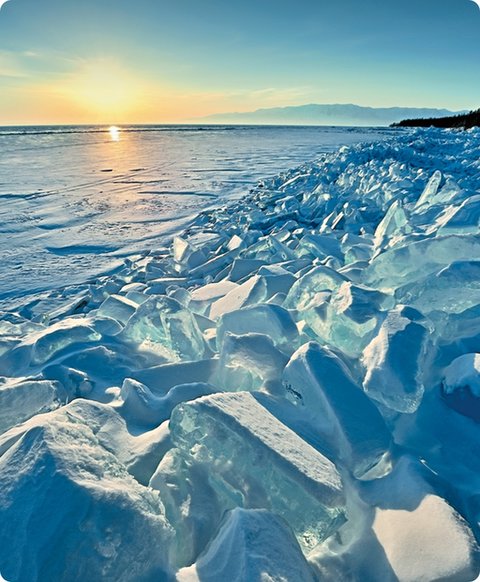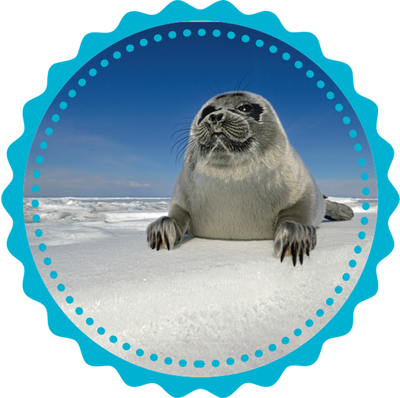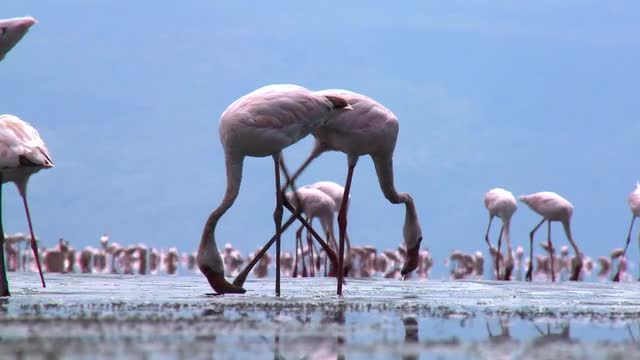Ah,lakes!Greatforfishing,swimming,andpaddling.Or…maybenot.Fromcreaturefeaturestomelt‑your-skinsalty,theselakesareamongEarth’sweirdestbodiesofwater.
SeeingSpots
OnepeekatSpottedLake,BritishColumbia,andyou’llthinkaboutyourfavoriteoldpajamas.Suchprettypolkadots!Butona lake?
SpottedLakefillsalowspotinCanada’sNk’MipDesert.Thelakeisendorheic—that’s geo‑speak for“deadend.”Mineral‑richwaterfromrainandmeltingsnowflowsin,butnothingflowsout.Insummer,mostofthewaterevaporates.Allthat’sleftisarainbowofsmall,mineral‑filledpools.Onemineral,magnesiumsulfate,formsawhitecrustthatsurroundsthepoolslike
a patio.
SpottedLakeisnosurprisetoCanada’sFirstNationspeople.TheycallitKliluk,andthey’veknownaboutitforcenturies.Eachlittlepool,accordingtotradition,hasitsownpowerfulhealingproperties.Feelingill?There’sapoolforthat.Poisonivy?Gotitcovered.Onelegendevensaysthatduringabattle,bothsidestookabreaktohealtheirwoundstogetherinthemedicinalwaters.Now,that’s powerful.

SpottedLake,BritishColumbia, Canada

LakeNatron,Tanzania, Africa
flamingos
PoisonorParadise?
Don’tbothertakingadipinLakeNatron,Tanzania.Inthedryseason,mostofthewaterevaporatesanyway.What’sleftishotterthanbathwater,redfrombacteria,andsupersaltyfromminerals.Thewaterissoharshitwillburnyour skin.
Besides,you’dhavetocompetewithmillionsofloud,smellylesserflamingos.What’sanightmareformostanimalsisaflamingo’sdream.Littleislandsofsaltstickupfromthelake bed.Theislandsaregreatplacestobuildflamingonests.Thetoxicwatersurroundingthemkeepsthenestssafe.Theflamingosthemselveshaveleatherylegsthatprotectthemfromthewater.Butifpredatorstrytosplashacrossitforaflamingosnack,theycouldendup dead.
Everyyear,mostoftheworld’slesserflamingosflocktoLakeNatrontobuildtheirnestsonthesemini-islands.Theyturnthishot,deadlylakeintoaseaoffluttery pink.
ExtremeLake
Big,bold,cold,andbeautiful.That’sLakeBaikal,Russia:Earth’sdeepest.It’smorethan1,000meters(3,280 feet)deepand636kilometers(395 miles)long.Morethan300riversfeedit.Duringthesummer,thishugelakecontainsafifthoftheplanet’sliquidfreshwater.Besidesbeingenormous,LakeBaikalisalsoEarth’soldestlake.Itdatesback25million years.
Animalsherehavehadalongtimetoevolve,orchange,apartfromtherestoftheworld.OfLakeBaikal’s1,500 species,manyarefoundnowhereelseon Earth.
LakeBaikal’smostfamousanimalisthenerpa.ThenerpaistheonlysealonEarththatlivesonlyinfreshwater.Oneofthenerpa’sfavoritefoodsisalittlepinkfishcalledgolomyanka.Thegolomyankaispartlytransparent!Lookcarefullyandyoumightspotone,sinceLakeBaikalisalsooneofEarth’sclearest lakes.

LakeBaikal, Russia

nerpa
